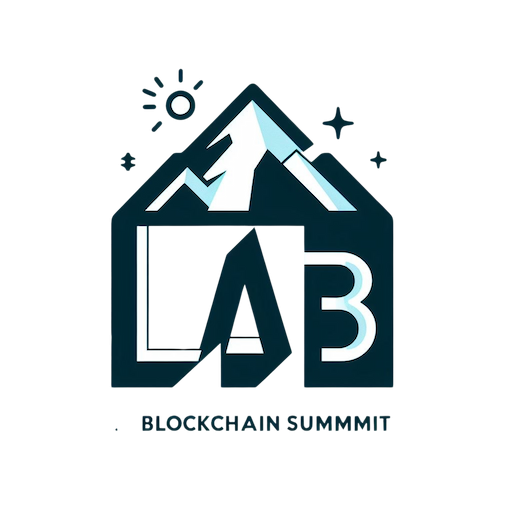
Overview of Aelf Layer 1 Blockchain
Aelf’s Layer 1 blockchain stands out with its ability to handle up to 15,000 transactions per second. Unlike other blockchains struggling with scalability, Aelf uses a multi-chain structure. This design ensures high efficiency and customization.
The core of Aelf’s architecture is its unique use of side chains. Each side chain handles specific tasks or applications, reducing congestion on the main chain. This approach results in faster transaction speeds and lower costs. For example, one side chain might manage smart contracts while another deals with token transfers.
Key features include cross-chain communication and consensus protocols like Delegated Proof-of-Stake (DPoS). These features enhance security and performance. In DPoS, stakeholders vote for delegates who validate transactions, making the network more democratic and secure.
Emerging trends show businesses adopting Aelf for various applications like supply chain management and gaming platforms. Its flexibility allows integration with existing systems without major overhauls.
Common concerns about blockchain often involve security and cost. But, Aelf addresses these through its efficient resource allocation and robust security measures. Businesses find it easier to scale operations without worrying about exorbitant fees or vulnerabilities.
Summarizing, Aelf’s Layer 1 blockchain offers a scalable, efficient solution for modern business needs by leveraging a multi-chain structure and advanced consensus mechanisms.
Key Features

Aelf’s Layer 1 blockchain stands out with several innovative aspects that make it a top choice for businesses. Let’s jump into some of its key features.
Modular Design
The modular design of Aelf allows for high customization. Each module performs specific tasks, which increases efficiency and flexibility. For instance, developers can add or remove modules based on their needs without affecting the entire system. This approach ensures that businesses can tailor the blockchain to fit unique requirements, enhancing overall performance and adaptability.
Cross-Chain Interoperability
Cross-chain interoperability is a standout feature in Aelf’s ecosystem. It enables different blockchains to communicate seamlessly, facilitating data and asset transfers across various platforms. For example, if you’re using Ethereum or Bitcoin, Aelf makes it easy to interact with these blockchains without needing complex conversions. This feature helps integrate diverse systems into one cohesive network, making operations smoother and more efficient.
Sidechain Support
Sidechain support in Aelf is crucial for managing scalability issues. By isolating specific tasks on sidechains, the main chain remains uncluttered and efficient. Think of it like having multiple lanes in a highway; traffic flows better when not everyone’s crammed into one lane. Sidechains handle various processes like smart contracts or transactions separately, ensuring faster speeds and lower costs on the main chain.
Performance and Scalability
Aelf’s Layer 1 blockchain truly stands out due to its high performance and impressive scalability. It’s designed to handle massive transaction volumes without breaking a sweat.
Consensus Mechanism
Aelf uses the Delegated Proof-of-Stake (DPoS) consensus mechanism, which is pretty neat. In DPoS, stakeholders vote for delegates who validate transactions on the blockchain. This makes the process faster and more efficient compared to traditional Proof-of-Work systems. Plus, it enhances security since only trusted delegates can validate transactions.
Transaction Speed
When it comes to transaction speed, Aelf doesn’t mess around. It processes up to 15,000 transactions per second (TPS). For comparison, Bitcoin manages about seven TPS and Ethereum handles around 30 TPS. Aelf achieves this through its unique multi-chain structure where side chains handle specific tasks independently, reducing congestion on the main chain and speeding things up significantly.
Emerging Trends
Emerging trends show that industries like supply chain management and gaming are increasingly adopting Aelf’s technology. Businesses love how they can scale operations smoothly using Aelf without worrying about high costs or vulnerabilities common with other blockchains.
By leveraging these features—efficient consensus mechanisms and high-speed transactions—Aelf provides a robust solution for businesses looking to integrate blockchain technology into their operations seamlessly.
Use Cases
Aelf Layer 1 blockchain shines with its versatility across various industries. Let’s jump into some specific areas where Aelf is making waves.
Decentralized Finance (DeFi)
Decentralized Finance, or DeFi, is one of the hottest trends in blockchain right now. Using Aelf’s high-speed and low-cost transactions, DeFi applications can operate smoothly without the usual hiccups of congestion and high fees. For instance, platforms for lending and borrowing digital assets benefit from Aelf’s scalable architecture. This makes financial services more accessible to everyone by cutting out middlemen like banks.
Supply Chain Management
Supply chain management has always been a headache for big businesses due to its complexity and lack of transparency. With Aelf’s blockchain, each step in the supply chain can be tracked immutably and transparently. Imagine being able to verify the journey of a product from manufacturer to consumer without any discrepancies. Companies like Walmart are already exploring these kinds of solutions to ensure product authenticity and reduce fraud.
Ecosystem and Community
Aelf’s ecosystem is like a bustling city, full of opportunities and innovations. In this section, I’ll jump into how Aelf connects with its partners and supports developers to build a thriving community.
Partnerships
Aelf collaborates with various industry leaders to enhance its blockchain. For example, it has partnerships with companies in finance, supply chain management, and gaming. These collaborations help integrate Aelf’s technology into real-world applications, creating practical solutions that benefit everyone involved.
| Company | Industry | Collaboration Focus |
|---|---|---|
| Huawei | Technology | Cloud Services Integration |
| Chainlink | Oracle Services | Cross-Chain Data Feeds |
| Huobi | Cryptocurrency Exchange | Trading Platform Support |
By working closely with these partners, Aelf ensures its blockchain remains versatile and adaptable.
Developer Support
Developers are the lifeblood of any blockchain project. Aelf provides extensive resources to support them. There are comprehensive SDKs (Software Development Kits) available that make building on Aelf straightforward. Plus, there’s an active developer community where you can share ideas and get feedback.
For instance:
- Detailed documentation guides you through each step.
- Regular hackathons encourage innovative solutions.
- Active forums provide a space for troubleshooting and collaboration.
These resources empower developers to create customized applications that leverage Aelf’s high-performance capabilities effectively.
Competitive Comparison
Comparing Aelf’s Layer 1 blockchain with other major blockchains highlights its unique strengths and potential advantages for businesses. Let’s jump into how it stacks up against Ethereum and Polkadot.
Comparison with Ethereum
Ethereum, known for its smart contract functionality, processes around 30 transactions per second (TPS), which pales in comparison to Aelf’s 15,000 TPS. While Ethereum uses a Proof-of-Work (PoW) consensus mechanism that can be slow and energy-intensive, Aelf employs a Delegated Proof-of-Stake (DPoS) system. This allows stakeholders to vote for delegates who validate transactions, enhancing both speed and security. Also, Ethereum’s high gas fees often deter users; meanwhile, Aelf’s multi-chain structure keeps transaction costs low by reducing congestion on the main chain.
Comparison with Polkadot
Polkadot aims to enable cross-chain communication among different blockchains through its relay chain architecture. But, it handles around 1,000 TPS compared to Aelf’s 15,000 TPS. Both platforms support interoperability; but, Aelf achieves this through side chains specifically designated for different tasks, improving efficiency and performance. Also, while Polkadot utilizes a Nominated Proof-of-Stake (NPoS) consensus protocol requiring nominators to back validators financially, Aelf’s DPoS model simplifies the process by allowing direct voting from stakeholders without the need for additional financial backing.
By examining these comparisons closely, one can see that Aelf offers significant advantages in terms of scalability and cost-effectiveness while maintaining robust security features through its innovative architecture.
